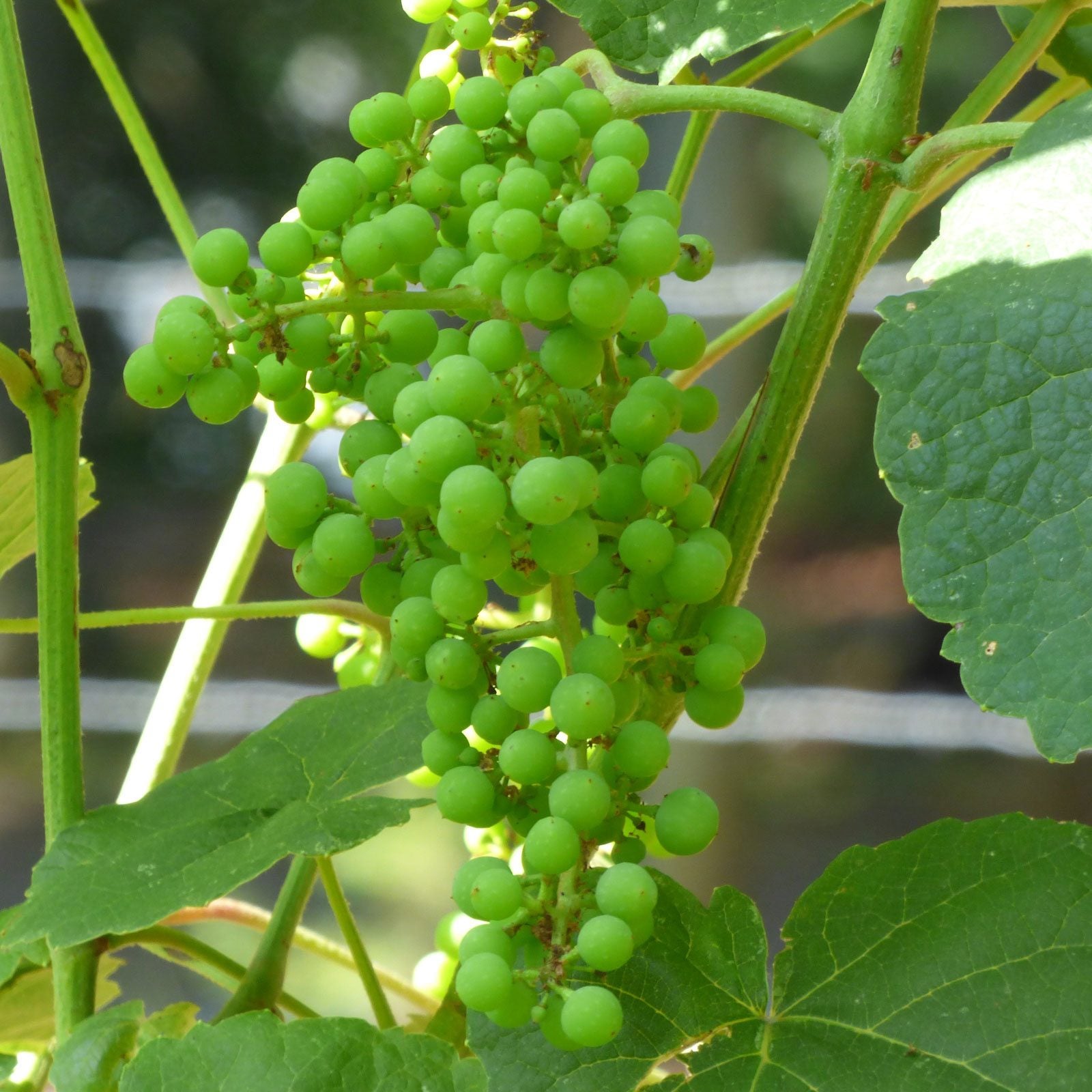Grapevine Fertilizer: When And How To Fertilize Grapes

Most types of grapes are hardy in USDA growing zones 6-9 and make an attractive, edible addition to the garden with minimal care. To get your grapes off with their best chance for success, it's advisable to do a soil test.
The results of your soil test will tell you if you should be fertilizing your grapevines. If so, read on to find out when to feed grapevines and how to fertilize grapes.
Fertilizing Grapevines Prior to Planting
If you are still in the planning stages with regards to grapevines, now is the time to amend the soil. Use a home testing kit to determine the makeup of your soil.
Generally, but dependent upon the grape variety, you want a soil pH of 5.5 to 7.0 for optimal growth. To raise a soil pH, add dolomitic limestone; to lower a pH, amend with sulfur following the manufacturer’s instructions.
- If the results of your test show the soil pH is fine but magnesium is lacking, add 1 pound (0.5 kg.) of Epsom salts for every 100 square feet (9.5 square meters).
- Should you find your soil is lacking in phosphorus, apply triple phosphate (0-45-0) in the amount of ½ pound (0.25 kg.), superphosphate (0-20-0) at the rate of ¼ pound (0.10 kg.) or bone meal (1-11-1) in the amount of 2 ¼ pounds (1 kg.) per 100 square feet (9.5 square meters).
- Lastly, if the soil is low in potassium, add ¾ pound (0.35 kg.) of potassium sulfate or 10 pounds (4.5 kg.) of greensand.
When to Feed Grapevines
Grapes are deep-rooted and, as such, require little additional grapevine fertilizer. Unless your soil is extremely poor, err on the side of caution and amend as little as possible. For all soils, fertilize lightly the second year of growth.
How much plant food should I use for grapes? Apply no more than ¼ pound (0.10 kg.) of 10-10-10 fertilizer in a circle around the plant, 4 feet (1 m.) away from each vine. In successive years, apply 1 pound (0.5 kg.) about 8 feet (2.5 m.) from the base of the plants that appear to lack vigor.
Apply plant food for grapes just when the buds begin to emerge in the spring. Fertilizing too late in the season can cause overly extensive growth, which may leave the plants vulnerable to winter injury.
Sign up for the Gardening Know How newsletter today and receive a free copy of our e-book "How to Grow Delicious Tomatoes".
How to Fertilize Grapes
Grapevines, like almost every other plant, need nitrogen, especially in the spring to jump-start rapid growth. That said if you prefer to use manure to feed your vines, apply it in January or February. Apply 5-10 pounds (2-4.5 kg.) of poultry or rabbit manure, or 5-20 (2-9 kg.) pounds of steer or cow manure per vine.
Other nitrogen-rich grapevine fertilizers (such as urea, ammonium nitrate, and ammonium sulfate) should be applied after the vine has blossomed or when grapes are about ¼ inch (0.5 cm.) across. Apply ½ pound (0.25 kg.) of ammonium sulfate, 3/8 pound (0.2 kg.) ammonium nitrate, or ¼ pound (0.1 kg.) of urea per vine. Zinc is also beneficial to grapevines. It aids in many plant functions and a deficiency can lead to stunted shoots and leaves, resulting in a reduced yield.
Apply zinc in the spring a week before the vines bloom or when they are in full bloom. Apply a spray with a concentration of 0.1 pounds per gallon (0.05kg./4L.) to the vine's foliage. You may also brush a zinc solution on fresh pruning cuts after you prune your grapes in the early winter.
Decreased shoot growth, chlorosis (yellowing), and summer burn usually mean a potassium deficiency. Apply potassium fertilizer during the spring or early summer when the vines are just beginning to produce grapes. Use 3 pounds (1.5 kg.) of potassium sulfate per vine for mild deficiencies or up to 6 pounds (3 kg.) per vine for severe cases.

Amy Grant has been gardening for 30 years and writing for 15. A professional chef and caterer, Amy's area of expertise is culinary gardening.
